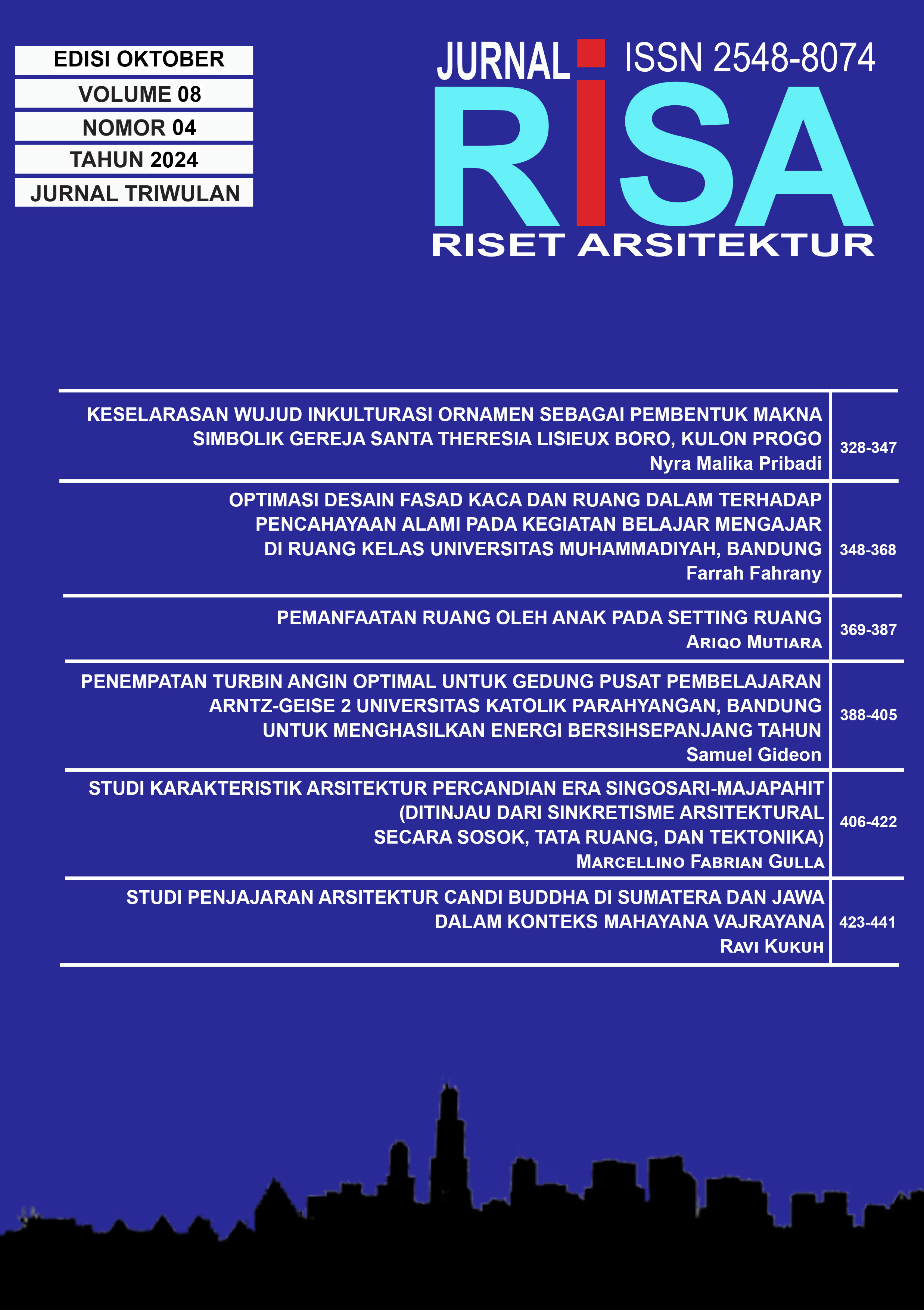CHILDREN’S USE OF SPACE IN THE SETTING OF PRAI IJING VILLAGE
DOI:
https://doi.org/10.26593/risa.v8i04.8579.369-387Abstract
Abstract - Unlike adults, children perceive their spatial surroundings differently. Such perception then triggers specific ways of using space. The local children of Prai Ijing village utilise their environment to accommodate their activities and spatial needs—often incorporating creativity— in their daily, and traditional settings.
This study aims to learn children’s perceptions of using their surrounding space in a traditional village. Specifically, this research explores local Prai Ijing children's perception of the village's unique cultural setting. Prai Ijing—a traditional village—located in Tebara village (Waikabubak, West Sumba, East Nusa Tenggara) is an award-winning tourist destination from the Ministry of Tourism and Creative Economy.
The data were compiled through observations and interviews in the daily lives of the Prai Ijing’s local children. The data were then analyzed using qualitative-descriptive methods to describe children’s perceptions of spatial use. Thus, this paper concludes with two points. Firstly, the court in between the housing complex as the Open Space, and the house terrace are the most significant settings for the children of Prai Ijing.. Secondly, the different variables in the settings bring out the specific ways Prai Ijing children can use the space.
Keywords: Children’s perception, behavior in using space, Traditional Village, Prai Ijing Village
Additional Files
Published
Issue
Section
License
Copyright (c) 2024 Ariqo Mutiara

This work is licensed under a Creative Commons Attribution-NonCommercial-ShareAlike 4.0 International License.












